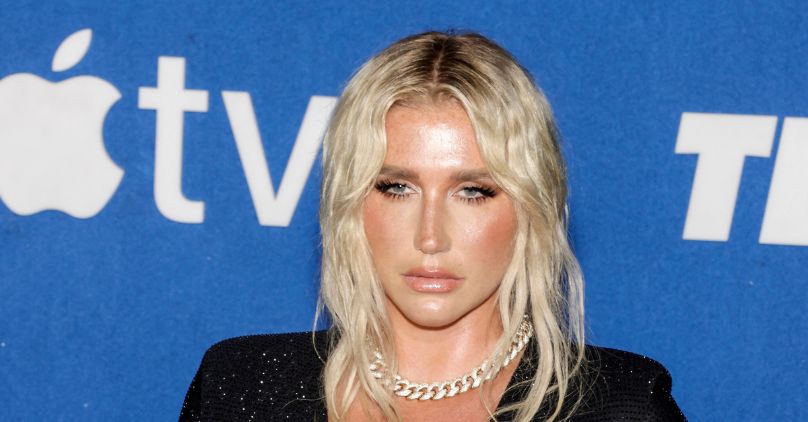Pop superstar Kesha is making headlines this spring beyond her musical endeavours. She has boldly entered the tech entrepreneurship realm with the launch of Smash, a platform aimed at revolutionising the traditional power dynamics within the music industry.
Launched in May 2025, Smash has attracted significant interest from investors and creators. The platform connects music professionals directly, enables seamless collaboration, and ensures artists retain full rights to their creations. It enters the music industry business software market, projected to reach $2.97 billion by 2032, while tapping into the $528 billion global creator economy.
Though the exact figures of the ongoing seed round remain undisclosed, Smash has drawn interest from music-tech-focused VCs, artist-led funds, and Kesha herself. Industry insiders point to WndrCo (the $460 million fund behind Mixcloud’s global expansion) as a likely strategic investor, alongside artist-backed funds such as The Weeknd’s Blue Icon Group.
The platform’s waitlist reached 50,000 creators within 72 hours of its announcement, demonstrating strong demand and Kesha’s influence among Gen Z and millennial artists. The timing is significant: according to a 2024 Music Business Worldwide survey, 83% of independent artists now prioritise rights retention over traditional label deals.
Kesha’s motivation to establish Smash stems from personal experience. At 18, she signed what she later described as a “predatory” contract, leading to years of legal battles for creative independence. While artists typically must choose between access and autonomy, Smash aims to eliminate this false dichotomy.
Her vision is to create a secure, supportive environment where songwriters, producers, engineers, and performers can connect, collaborate, and conduct business while maintaining ownership and creative control. Kesha’s own legal struggle, which lasted over a decade and cost an estimated $50 million, has become a rallying cry for artists seeking fairer industry practices.
Star power meets Silicon: The brains behind Smash
Smash’s leadership matches its ambitious mission. As CEO, Kesha brings industry experience and a steadfast commitment to creator rights. CTO Alan Cannistraro, an engineer with an impressive background at Apple and Facebook, contributes his expertise in developing major consumer products. Under his guidance, Smash employs a modern, adaptable tech stack with AI-driven algorithms that connect creators based on genre preferences and project requirements.
To create optimal matches, the platform’s AI matching engine analyses over 15 collaboration factors, including genre affinity, project history, and equipment compatibility. The company benefits from guidance by notable advisors from Crush Music and legal specialists from CreativeFuture, ensuring both a strong network and solid compliance.
Early technical documentation shows that Smash is implementing smart contracts to automate royalty splits for multi-creator projects, while planning NFT-based features for limited-edition releases and unique digital collectables. The platform runs on a secure, serverless AWS backbone, with React Native powering its mobile experience.
The startup’s go-to-market strategy exemplifies its founder’s innovative spirit. To drive initial engagement, Smash has launched a remix challenge for Kesha’s latest single, “BOY CRAZY.” Registered creators receive the track’s stems and have one week to submit remixes. The winning entry, selected by a panel of industry professionals, is slated for release on Kesha Records, her independent label. This initiative not only showcases the platform’s collaborative features but also provides a unique opportunity for creators to gain exposure and recognition.
Behind Smash: Networking meets marketplace
Smash enters a competitive yet fragmented market. While platforms like SoundBetter and BandLab offer basic collaboration features, no platform combines verified talent discovery with robust rights protection.
The platform combines networking and marketplace elements, which Kesha describes as “LinkedIn for music creators, combined with a Fiverr-style marketplace.” Users create profiles, connect with vetted collaborators, and engage with project listings. Built-in contracting and payment tools streamline the business side of creativity. What sets Smash apart is its emphasis on rights management.
Through blockchain-powered IP tracking, creators can be confident their contributions remain protected while maintaining ownership throughout the collaborative process. Smart contracts and blockchain provide transparent, tamper-proof records of creator contributions and automate royalty payments — a first for mainstream music collaboration platforms.
CTO Cannistraro emphasises this distinguishing feature: “No platform combines verified talent with airtight rights protection.” Industry analysts suggest that even a modest market share could generate substantial recurring revenue through Smash’s premium subscription model, with additional growth potential in licensing its IP management tools to indie labels and festivals. For context, competitor Splice reached 14 million monthly users and $57.5 million in funding by 2024, while BandLab surpassed 100 million users in March 2024.
Smash’s roadmap reflects its ambition. This year, plans include a public beta launch featuring NFT-based royalty distributions and enhanced integration with Kesha Records’ A&R pipeline. Future expansion may consist of film and TV. By 2026, Smash plans to introduce predictive analytics for A&R scouting, using artist data to help labels and managers discover emerging talent. The company is also exploring partnerships with music festivals and sync agencies to extend its rights management tools into film, TV, and advertising.
As the music industry grapples with creator compensation and control issues, Smash’s model offers artists complete ownership, access to professional tools, and a global network, potentially setting a new industry standard. This venture transcends business for Kesha: “This isn’t just about music — it’s about building the creative middle class.” Smash’s success could transform power dynamics across entertainment sectors and inspire a new artist-entrepreneur generation.

